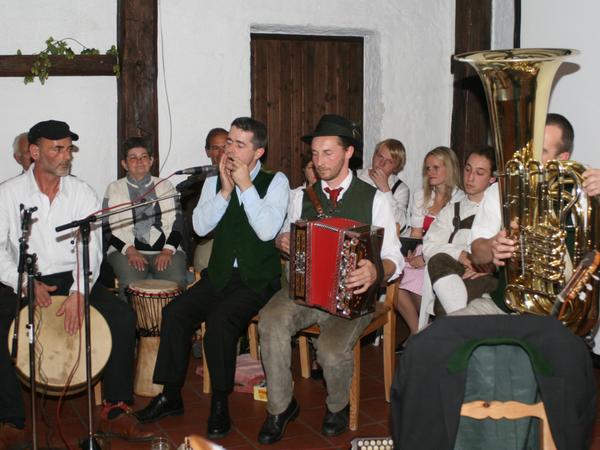Jew's harp playing in Austria
Performing arts throughout Austria, inscribed 2012
The Jew’s harp is a bourdon instrument that can be made of various materials, including metal and bamboo. Jew’s harp playing is among the oldest musical practices of mankind and is particularly widespread among the Turkic peoples of Asia and in Europe, with centres of production and playing evolving with their own individual characteristics. Since the Middle Ages, for example, the Upper Austrian town of Molln has had its own guild of Jew’s harp makers (see “Production of the Molln Jew’s Harp”).
Historically, the Jew’s harp played a key role in the Alpine region in courtship and in convivial music-making. In Austria, Jew’s harp playing is still today characterised in particular by an alternating technique, in which a player switches between two to four differently tuned Jew’s harps, playing either as a solo instrument or in a duet or trio, but most frequently in combination with other instruments.
The Jew’s harp is classified as an aerophone. The mouth cavity acts as a resonance chamber; altering its shape produces various partial tones of the overtone spectrum, with the fundamental tone always sounding as a drone. Dynamics and rhythm are determined by the airflow, while the player’s lips and tongue help produce tonal nuances, i.e. melodies.
Although the Jew’s harp was supplanted by the harmonica over time, it experienced a renaissance beginning in the 1960s. In 1997, the Österreichischer Maultrommelverein (Austrian Jew’s Harp Society) was founded. In 1998, the 3rd International Jew’s Harp Festival was held in Molln.
Downloads
- Application form (in German only) 719 KB (pdf)
- Expertise Haid (in German only) 47 KB (pdf)
- Expertise Derschmidt (in German only) 237 KB (pdf)


![[Translate to EN:] © J. Ségur/ZED, with the permission of UNESCO](/fileadmin/_processed_/d/b/csm_Convention-2003-IKE_0832a6a47d.jpg)
![[Translate to EN:] © ÖUK](/fileadmin/_processed_/3/9/csm_P1011318_7eac86402f.jpg)

![[Translate to EN:] © Weitblickfilm](/fileadmin/_processed_/9/8/csm_Workshop_17_2dee1e1fd8.jpg)